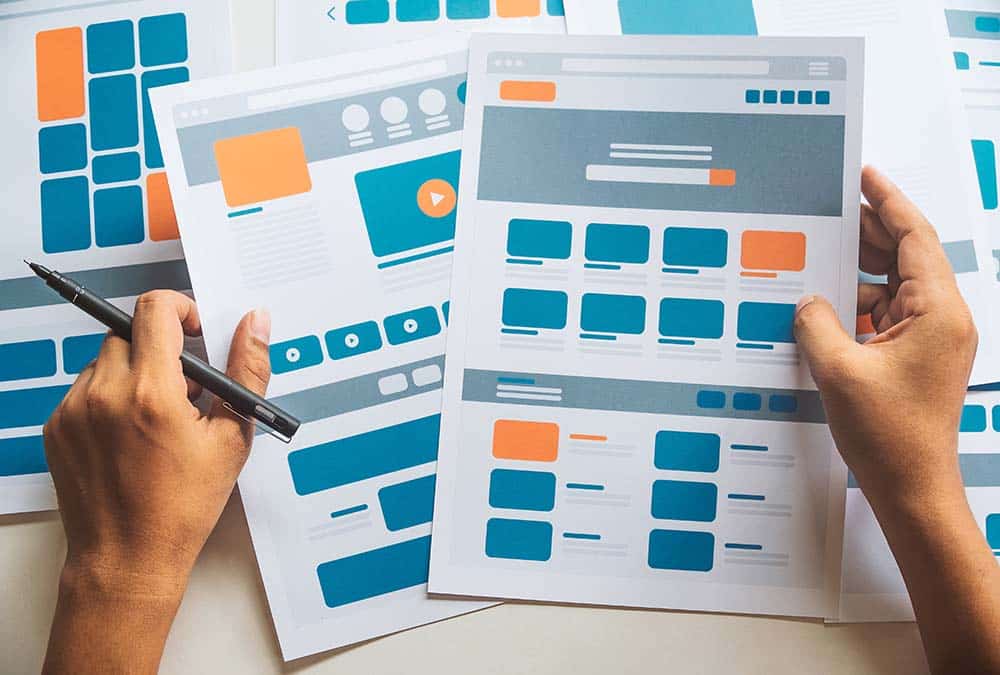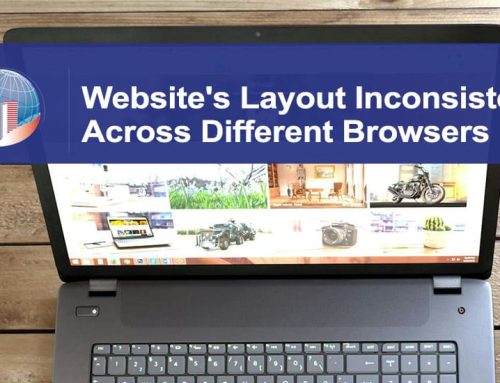
User Experience (UX) is one of the most important aspects of modern business strategy. Whether running an e-commerce site or providing services online, creating a seamless and meaningful experience for your users directly influences their perception of your brand and willingness to engage with your products. At Salterra, we recognize the value of a well-designed user experience and its ability to drive business growth. But what exactly is UX, and why does it matter to businesses today?
Defining User Experience (UX)
At its core, User Experience (UX) refers to how a user interacts with and experiences a product, service, or system—most commonly websites and applications. UX design encompasses several elements, including usability, accessibility, performance, and visual aesthetics. A meaningful user experience allows businesses to define customer journeys on their products, ensuring users can easily navigate and complete their desired actions.
With UX research, designers can empathize with users’ needs and fully understand how their products will be used. They can also understand user problems and create solutions that address their needs.
Why UX Matters for Businesses
The impact of UX on business performance cannot be overstated. In an increasingly competitive digital landscape, flawless UX design is key to retaining customers and driving revenue growth. Here’s why UX matters:
- User Satisfaction: A well-thought-out UX makes your website easy, efficient, and enjoyable to navigate. When users have a positive experience, they are more likely to stay on your site, explore your offerings, and ultimately convert into paying customers.
- Engagement: Engaged users are the lifeblood of any online business. UX design can help put better products to market by enhancing interaction and increasing user engagement. With meaningful engagement, businesses see higher conversions and more repeat customers.
- Business Performance: A good UX directly influences overall business performance. Users who find your site intuitive and easy to use are more likely to trust your brand, return for future purchases, and recommend your services to others.
The Role of UX in Customer Retention
One of a business’s primary goals is to retain its customers. While attracting new customers is important, keeping the ones you already have is key to long-term success. Poor usability leads to abandonment, which can be disastrous for a business’s retention rates. Studies show that customers who experience a smooth, frustration-free interaction with a website or application are more likely to return.
For example, a slow-loading website or complex checkout process can turn users away. In contrast, a website that loads quickly, is easy to navigate, provides clear paths to action, and encourages users to stay, engage, and complete their transactions. Flawless UX design retains customers and ensures they return to your website, increasing loyalty and revenue. Partnering with a trusted Tucson, AZ, web design agency ensures your website’s UX is optimized, helping you drive engagement and achieve long-term business success.
Key UX Elements to Consider
UX design isn’t just about making a website look good—it’s about ensuring that the design serves its users effectively. Here are some of the most important elements of UX that can transform a business’s online presence:
- Usability: Usability ensures users can interact with your website or product easily and intuitively. If a site is difficult to use, users will become frustrated and abandon their tasks.
- Navigation: Site navigation is one of the most critical components of UX design. Well-structured navigation helps users find information quickly and easily, enhancing their overall experience. Poor navigation, on the other hand, can lead to user frustration and abandonment.
- Accessibility: It’s important to ensure your website is accessible to all users, including those with disabilities. This can involve adding features like screen readers or keyboard navigation.
- Visual Design: While functionality is critical, visual aesthetics are key to how users perceive and interact with your website. A clean, modern, and professional design fosters trust and engagement.

How UX Affects Your Website’s SEO
User experience and search engine optimization (SEO) are closely linked. Search engines like Google factor user experience signals into their rankings. Websites that offer a seamless user experience, with fast page load times, mobile optimization, and simple navigation, tend to perform better in search rankings. At Salterra, we prioritize both UX and SEO to ensure that your website looks good, functions well, and gets more traffic by ranking higher on search engines.
Additionally, responsive web design ensures that websites are optimized for all devices, which is critical in both UX and SEO. With increasing mobile usage, businesses that don’t prioritize mobile-friendly designs risk losing potential customers and search engine visibility.
The Relationship Between UX and Conversion Rates
Improving your website’s UX can lead to significant improvements in conversion rates. If your website is easy to use, users are more likely to complete actions, whether purchasing, signing up for a newsletter, or filling out a contact form. By removing any barriers to action, UX design enhances your website’s ability to convert visitors into paying customers.
The design process should also focus on clear calls to action (CTAs). Strategically placing CTAs encourages users to take the desired action at the right time, improving overall conversion rates. In short, a well-designed user experience leads to higher conversions and, consequently, more business revenue.
The Cost of Ignoring UX
Failing to invest in UX design can be costly. Poor UX leads to frustrated users, high bounce rates, and lost sales opportunities. It can also damage your brand’s reputation, making it difficult to build trust with potential customers. When designers neglect the user experience, businesses can suffer from low engagement, poor retention, and missed growth opportunities.
In contrast, businesses that prioritize UX often see better customer satisfaction, more engagement, and improved overall business performance. In today’s market, UX is no longer optional—it’s essential for staying competitive and relevant.
User Experience and CSS
CSS (Cascading Style Sheets) is directly tied to web design’s user experience (UX). By shaping the visual presentation and layout, CSS helps ensure that websites are aesthetically pleasing and functional across various devices. Good CSS practices contribute to responsive web design, intuitive navigation, and faster load times—critical for positive UX. On the other hand, poorly implemented CSS can result in cluttered layouts, slow performance, and inaccessible content, negatively impacting the user’s interaction and satisfaction with a website. Thus, CSS is vital in bridging the gap between design and usability, ultimately improving overall UX.
Common Questions About User Experience
What is the most important aspect of user experience design?
The most important aspect of user experience (UX) design is usability. A website or product must be easy to navigate, intuitive, and user-friendly. Suppose users cannot accomplish their goals quickly and efficiently. In that case, they will likely abandon the site and move on to a competitor. Good usability ensures users can interact with the product without frustration, creating a seamless journey from start to finish. It includes clear navigation, responsive design, fast loading times, and mobile compatibility. A website that is easy to use enhances customer satisfaction, engagement, and conversion rates, making usability a key factor in UX design.
Another crucial aspect is understanding the user’s needs and behavior through UX research. Without UX research, designers can’t empathize with users’ problems and expectations, making it difficult to create solutions that meet their needs. By understanding the target audience’s goals, UX designers can tailor the experience to be more relevant, engaging, and successful in driving conversions.
Is hiring a web designer with UX expertise worth it?
Absolutely. Hiring a web designer with UX expertise is an investment that can significantly impact your business’s success. A web designer who understands UX principles ensures your website is visually appealing, functional, easy to navigate, and optimized for user satisfaction. This can lead to improved engagement, higher conversion rates, and better customer retention. UX experts help you avoid common pitfalls like confusing layouts, slow page load times, and poor mobile responsiveness, all of which can drive users away.
Moreover, a designer with UX expertise will streamline the design and development process, ensuring your site aligns with best practices for user experience and business goals. Although hiring a designer with UX knowledge might cost more upfront, the long-term benefits, such as increased revenue, user satisfaction, and brand loyalty, make it a wise decision for any business looking to succeed online.
Comprehensive User Experience (UX) Checklist
Creating an excellent user experience (UX) is crucial for the success of any website or digital product. A well-designed UX enhances user satisfaction and increases engagement and conversion rates. To ensure your website or product offers the best possible experience, you need to consider several key aspects during the design process. Here’s a comprehensive UX checklist to optimize your website’s performance and usability.
UX Checklist:
- Understand Your Target Audience
Conduct thorough UX research to understand your target users’ needs, preferences, and behaviors.
Create user personas to define your ideal customers and their pain points. - Simplify Navigation
Ensure clear and intuitive navigation with a well-structured menu and easily accessible key pages.
Use consistent navigation elements across all pages to avoid confusion. - Mobile-First Design
Make your website mobile-friendly, ensuring a seamless experience across all devices and screen sizes.
Prioritize responsive design for easy access and use on smartphones and tablets. - Optimize Page Load Speed
Improve loading times by optimizing images, minifying code, and leveraging browser caching.
Aim for page load times under three seconds to reduce bounce rates. - Clear Call-to-Actions (CTAs)
Use distinct and compelling CTAs that guide users toward desired actions, such as signing up or purchasing.
Place CTAs in prominent positions throughout your site for better visibility. - Consistent Design Elements
Ensure visual consistency by using the same fonts, colors, and layout throughout your website.
Maintain a cohesive design to enhance brand identity and user trust. - Prioritize Content Readability
Use legible fonts and proper contrast for text to ensure readability across devices.
For easier scanning, break up long content with headings, subheadings, and bullet points. - Test User Flows
To ensure smooth navigation, map out and test critical user journeys, from landing pages to conversion points.
Identify pain points and optimize pathways for maximum efficiency. - Focus on Accessibility
Make your website accessible to all users, including those with disabilities.
Incorporate alt text for images, keyboard navigation, and screen reader compatibility. - Improve Visual Hierarchy
Organize your design elements logically to guide users through the content with ease.
Use size, color, and contrast to create a clear hierarchy and focus attention on important elements. - Implement User Feedback
Collect user feedback regularly to identify areas for improvement.
Use insights from customer feedback to make iterative updates and refine the UX. - Ensure Security and Trust
To build user confidence, display trust signals such as SSL certificates, customer reviews, and privacy policies.
Prioritize data security to protect user information and establish credibility. - Test and Iterate
Perform usability testing and A/B testing to evaluate different design elements and features.
Continuously iterate and improve the UX based on test results and user behavior analysis.
By following this UX checklist, you can create a more engaging, user-friendly website that meets your audience’s needs and helps you achieve your business goals.
Why Salterra Prioritizes UX Design
At Salterra, we understand that UX is central to delivering a website that works effectively for your business. Our team designs websites that enhance the user experience, ensuring customers can easily interact with your brand, find the information they need, and complete their desired actions. From clear navigation to fast-loading pages, we prioritize every detail of the user journey.
By working with Salterra, you’ll have access to a team of designers who understand the importance of UX and its impact on your business’s success. We ensure your website performs well and leaves a positive, lasting impression on your customers.

Connection Between UX and Business Success
Ultimately, UX plays a pivotal role in determining a business’s success in the digital world. By making your website easy, efficient, and enjoyable, you can improve user satisfaction, engagement, and overall business performance. Investing in UX design helps businesses put better products to market, reducing customer abandonment and improving retention.
Salterra’s approach to UX design is rooted in creating meaningful user experiences. We ensure your website is optimized for user satisfaction and business growth. If you’re ready to elevate your website’s performance and provide your customers with the best possible experience, contact Salterra at (520) 214-3729. We’re here to help your business thrive in the digital age.
Frequently Asked Question and Salterra Website Design.
Why Trust Salterra
Salterra Web Design is a premier Tucson web design agency dedicated to helping local businesses thrive online. Since 2011, we have specialized in creating stunning, user-friendly websites for small—to medium-sized businesses in Tucson, Arizona. Our team of experienced web developers, graphic designers, and digital marketing professionals works together to provide comprehensive digital solutions tailored to your business needs.
At Salterra, we offer a wide range of services designed to enhance your online presence and drive business growth:
- Web Design and Development: We create beautiful, responsive websites that look great and provide a seamless user experience across all devices. Our designs are tailored to reflect your brand identity and meet your business goals.
- Search Engine Optimization (SEO): Our expert SEO services ensure your website is easily found by potential customers. We use advanced techniques to improve your search engine rankings, increase organic traffic, and boost your online visibility.
- Digital Marketing: From social media management to pay-per-click (PPC) advertising, our digital marketing strategies are designed to engage your audience and convert visitors into loyal customers. We focus on creating targeted campaigns that deliver measurable results.
- Content Marketing: Our team produces high-quality, engaging content that resonates with your audience and enhances your brand’s online presence. We help you build authority and trust through valuable and informative content.
- Website Hosting and Maintenance: We provide reliable hosting solutions and ongoing website maintenance to ensure your site remains secure, up-to-date, and performs at its best.
As a family-owned business, we offer personalized service and build long-term client relationships. Our commitment to quality work and fair pricing has earned us a solid reputation in the Tucson community. We understand local businesses’ unique challenges and are passionate about helping them succeed in the digital world.
If you are looking for a trusted partner to elevate your online presence, look no further than Salterra Web Design. Contact us today to learn how we can help your Tucson business grow with our expert web design and digital marketing services.
Contact Information:
Email: info.salterra@gmail.com
Phone: (520) 214-3729
Location: Tucson, AZ
Salterra operates in Arizona, with a strong presence in key regions such as Tucson, Tempe, Phoenix, and Chandler.
Our Locations
Web Design in Casa Adobes | Web Design in Catalina Foothills | Web Design in Marana | Web Design in Oro Valley | Web Design in Drexel Heights
Web Design Sahuarita | Web Design South Tucson | Web Design Green Valley | Web Design Vail




